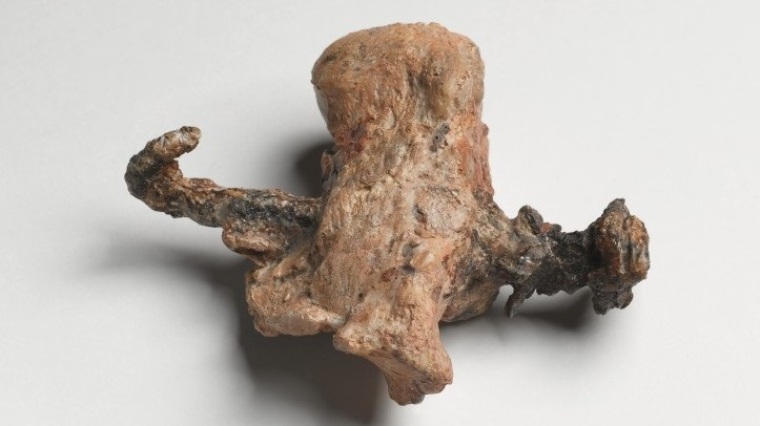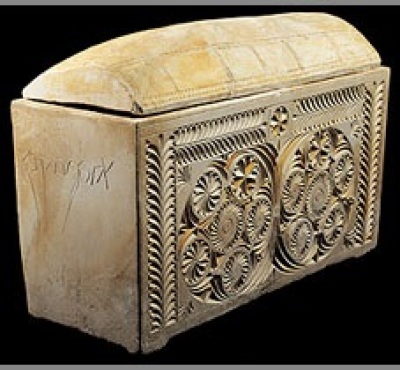What is the evidence of Christ's resurrection?

JERUSALEM (Christian Examiner) – The last seven days of Christ's life on earth compose a significant portion of the New Testament of the Bible. Almost a third of the chapters of the four Gospels present daily details about His arrival in Jerusalem, torture, crucifixion and resurrection, and offer encouragement about His promised return.
The pages present testimony of witnesses not only about His existence but also His nature as both man and God. Indeed, John declares that what he recorded was sufficient to "believe that Jesus is the Christ, the Son of God, and that believing, you may have life in His name."
However, that does not mean the Bible lacks external verification. In fact, archaeologists continue to make discoveries that confirm the trustworthiness of the Word.

- In 1990, a construction crew broke through a limestone chamber that contained 12 ossuaries, or boxes of bones. One of them was inscribed with the name Joseph son of Caiaphas, which was recorded in historical references as the name of the high priest who presided over one of the trials of Jesus. Along with Pontius Pilate, he was a central figure in the crucifixion of Christ.
And one of them, Caiaphas, being high priest that year, said to them, "You know nothing at all, nor do you consider that it is expedient for us that one man should die for the people, and not that the whole nation should perish." John 11:48-50
- Although Pontius Pilate was the Roman governor of Judea during the time of Jesus' ministry, the only evidence of his life existed in the writings of the Jewish philosopher Philo, the Roman historian Tacitus, and Josephus, a Romano-Jewish scholar ... until 1961. In a dig at the site of an ancient city of Jesus' time, archaeologists found a repurposed stone that simply said "Pontius Pilate, Prefect of Judea." But the dating of the artifact to the first century confirmed his place in biblical history.

Now Pilate wrote a title and put it on the cross. And the writing was [in Hebrew, Greek, and Latin]: "JESUS OF NAZARETH, THE KING OF THE JEWS." John 19:19
- Critics of the Bible discounted the account of the crucifixion as improbable because there was no material proof that the Romans used that form of capital punishment; and, they argued that a criminal's body would not be buried according to Jewish law but dumped in a common grave. Then in 1968 the bones of a man identified as Yehohanan ben Hagkol were found in an ossuary dated to the time of Christ. The ankle bone was still pierced with a large nail and a piece of wood was yet attached – evidence of death by crucifixion and a proper Jewish burial.
Then He said to Thomas, "Reach your finger here, and look at My hands; and reach your hand here, and put it into My side. Do not be unbelieving, but believing." John 20:27
Even this year, archaeologists digging beneath the floor of an abandoned building in Jerusalem discovered what is believed to be Herod's palace where one of the trials of Jesus took place. It was here that soldiers mocked Jesus as king, even placing on His shoulders a royal robe.
However, the Bible teaches that faith is not decided on the basis of material evidence, whether a death shroud, a crucifixion nail or any other piece of archaeology.
Herod who received regular reports about the miracles of Jesus by people he trusted, still could not believe in Him even with Christ in his presence. The ruthless Pilate found no guilt in Jesus and even declared him "king of the Jews" but could not humble himself to declare Him King of kings.
Just as John wrote that enough has been presented that one can believe, he also recorded Jesus' conversation with Thomas that there will be those "who have not seen and yet have believed."
Thus, as Easter approaches, proof of the resurrection will not be found in a museum collection of physical objects that confirm details of Christ's life. This Easter, Believers can celebrate with confidence Jesus' resurrection, because proof is not needed for faith. Rather "faith comes from hearing, and hearing by the Word of God."
From that faith emerges a personal relationship which testifies to His existence and power, and because of this relationship we can commemorate His resurrection with assurance He is risen. He is risen indeed!